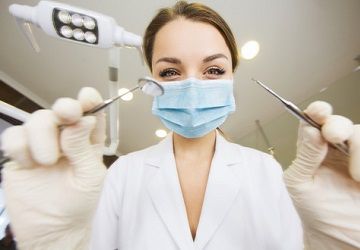How to Make a Lasting Impression on New Dental Patients
Key factors to getting new patients through your practice’s door and keeping them coming back include making sure your website is structured appropriately, and training your entire staff to handle phone calls.

The “first encounter” a patient has with your office starts outside of your practice doors and on your telephone line.
In her continuing education session at the 2017 Yankee Dental Congress in Boston, Mass., on Saturday, Jan. 28, Alicia Owens, a Dentrix profitability coach at Henry Schein Practice Solutions, discussed how to get new patients and keep them coming back.
RELATED: More Yankee Dental Congress Coverage
· Dealing with the ‘Human Being Connected to the Tooth’
· Make Meaningful Use of Social Media for Your Dental Practice
· Does Your Practice Meet HIPAA Compliance Standards
In this age of technology, in order to beat the competition, it is important to make yourself accessible, she said. An updated website can help a patient not only discover who you are and where you are located, but it can also help the patient know what procedures you offer. Owens suggested having a “patient resources” section on your website so that patients understand the procedures they will be undergoing.
After a patient is satisfied with what they see online, they likely will call your office to make an appointment. According to Owens, it doesn’t take face-to-face contact for a patient to be put off. Ensuring your entire staff — not just those working the front desk – is well-equipped to answer any patient questions over the phone is recommended. If your staff doesn’t plant that seed of trust with the patient, they might not choose your practice.
Once that new patient makes their first visit, there are two goals that need to be achieved: high-quality customer service and timeliness. Owens recommended that if a patient walks through your doors and immediately sits down without signing in, have your front desk staff approach that patient and acknowledge their presence, rather than wait for the patient to come to them. Next, it is important not to keep the patient waiting for too long. She advised that dentists should measure the average amount of time it takes to perform a procedure and schedule all appointments accordingly.
Most importantly, it is your job as the dentist to ensure that the patient has confidence in your abilities and feels that you genuinely care about their wellbeing. You can do this by listening, responding to their fears, and addressing their misconceptions.
Finally, when you’ve successfully gained that new patient, reach out to them and ask how they are doing after their first procedure. Remember to use their most preferred mode of communication—whether it be email, text, or call–not the one that is most convenient to you.
Owens said that the average number of active patients — those who have visited your practice in the last 18 to 24 months – should be between 80 to 85 percent of your total patient base. To keep patients active, have your staff continuously reach out to them. If, for example, 100 patients are due to come in for continued care, but only 80 have scheduled appointments, make those calls to remind your patients to schedule an appointment, and try to get them on the books during that phone call.
Furthermore, try to make it a habit to schedule a patient’s next appointment at the end of each appointment. In addition, follow-up with your patients a few days before their appointment so that they make it into your office.
It is important to know how these new patients are coming to your practice. If, for example, most of your new patients are referrals from your existing base, take the time to appreciate your patients. Owens stressed the importance of not wasting marketing resources on where they aren’t needed. For example, if you rarely get new patients through Facebook, there is no need to expense a Facebook ad campaign.
According to Owens, an educated patient is an active patient. Take the time to explain the importance of oral health and its effects on overall wellbeing to your patients. You may know that keeping up your oral hygiene may help prevent further damage, but you shouldn’t assume that all patients do.
You can find more of our coverage from the Yankee Dental Congress here.
ACTIVA BioACTIVE Bulk Flow Marks Pulpdent’s First Major Product Release in 4 Years
December 12th 2024Next-generation bulk-fill dental restorative raises the standard of care for bulk-fill procedures by providing natural remineralization support, while also overcoming current bulk-fill limitations.